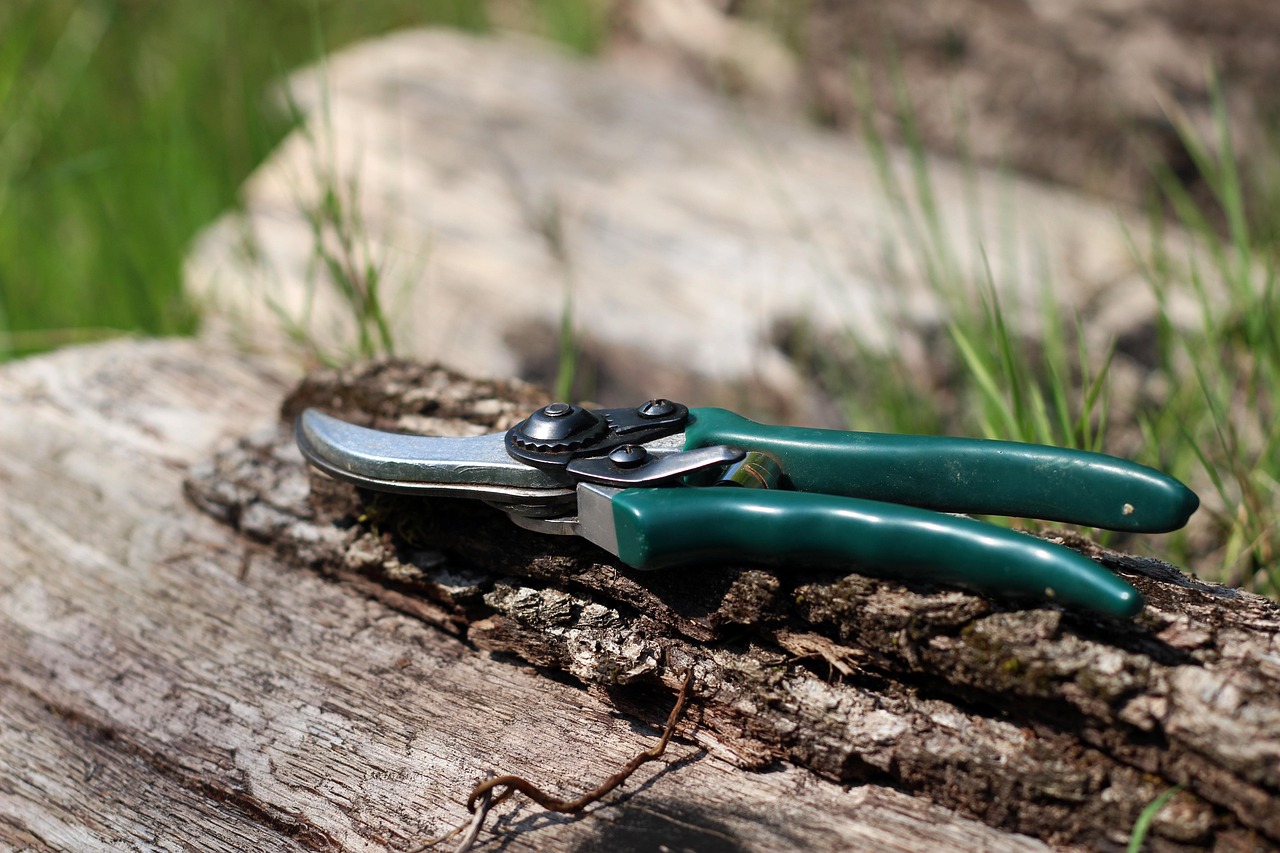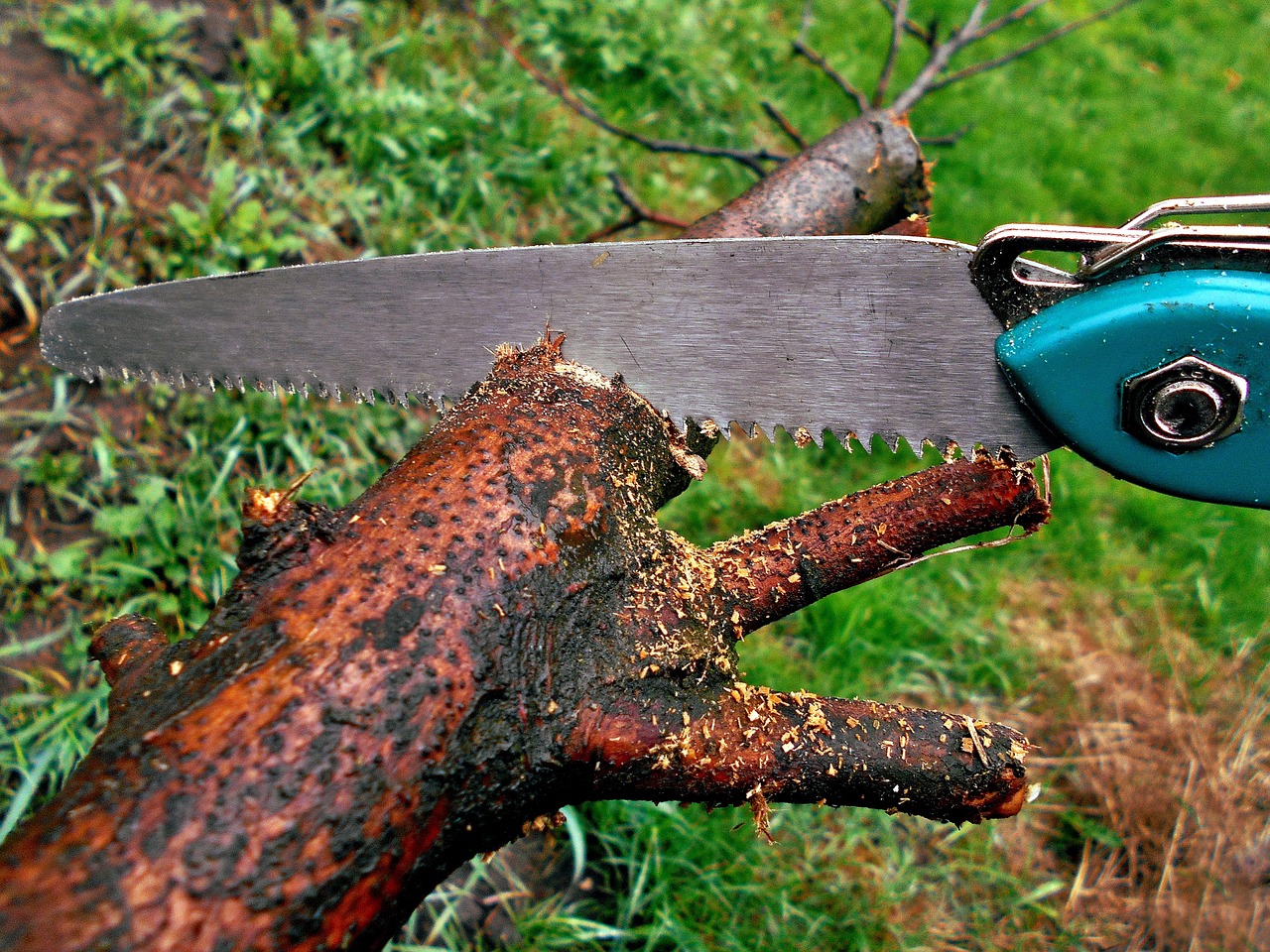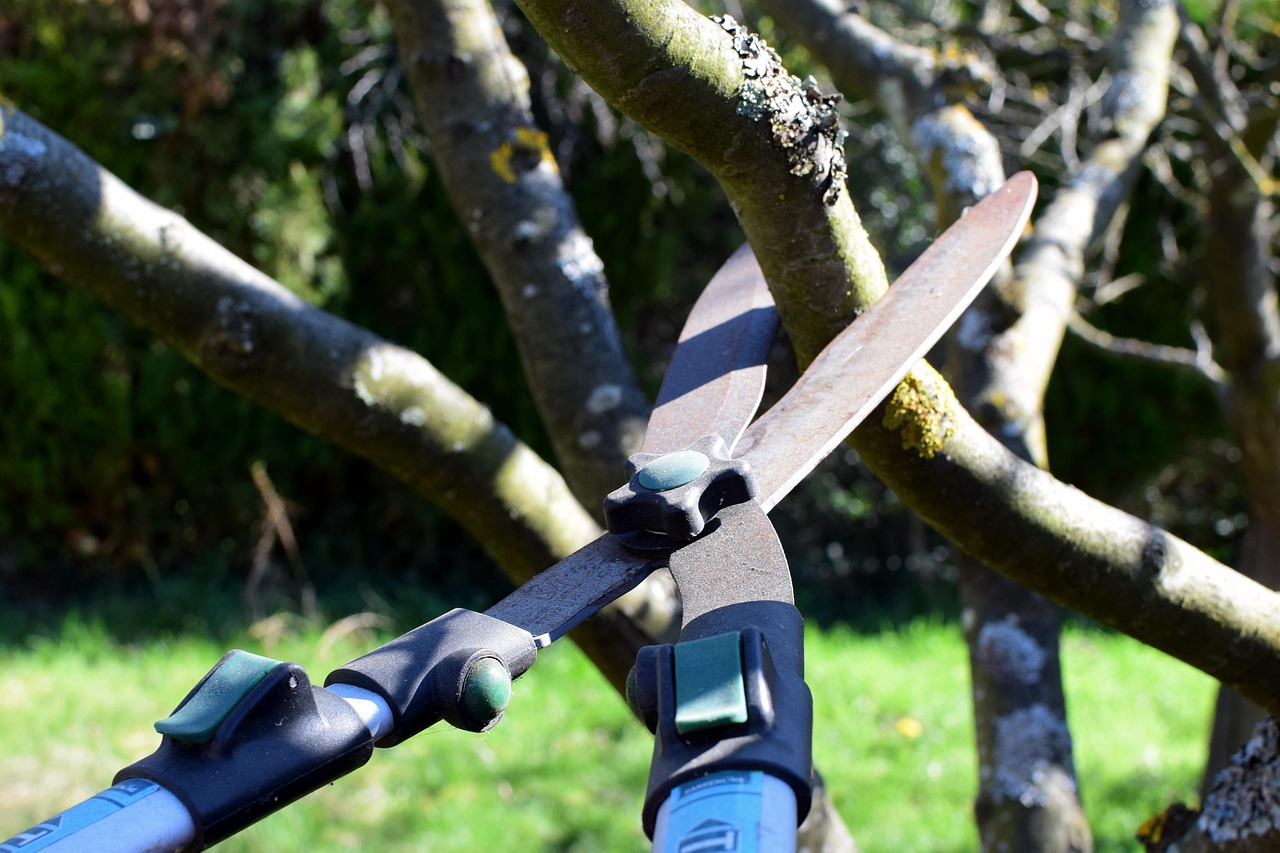Pruning trees with included bark requires careful techniques to prevent further damage and promote healthy growth. Start by identifying the included bark areas, typically found where branches diverge. Use sharp, clean tools to make precise cuts, angling them to avoid trapping moisture. Focus on removing weak or crossing branches while maintaining the tree’s natural shape and balance.
Pruning trees with included bark requires careful techniques to avoid damaging the tree. Key methods include making proper cuts above the branch collar, ensuring clean cuts, and removing dead or weak branches to promote healthy growth.
Tree pruning is an essential practice for maintaining the health and aesthetics of trees. Included bark refers to a condition where bark grows between two branches or stems, creating a weak union that can lead to structural failure. This situation is common among certain tree species, especially when they grow too close together. Understanding how to properly prune these trees is crucial for preventing damage and promoting healthy growth.

Included bark can lead to several issues, including increased susceptibility to disease and pests. When two branches grow too closely, they can rub against each other, causing wounds that invite pathogens. Additionally, the structural weakness created by included bark can result in branches breaking during storms or high winds. Therefore, employing the right pruning techniques is vital for ensuring the longevity and health of affected trees.
Understanding Included Bark
Included bark forms when two branches grow too close together and the bark between them does not properly separate. This can create a V-shaped union rather than an ideal U-shaped one. The following points explain why this phenomenon occurs and its implications:
- Most commonly found in species such as maples, oaks, and elms.
- Often results from improper pruning techniques during the tree’s early growth stages.
- Weakens the structural integrity of the tree over time.
Recognizing included bark is essential for effective pruning. Identifying these unions allows arborists and homeowners to take proactive steps to manage tree health. Proper identification typically involves inspecting the base of the branches and looking for signs of bark inclusion.

Techniques for Pruning Trees with Included Bark
Pruning techniques specifically designed for trees with included bark are crucial for reducing risk factors associated with weak branch unions. Here are several key strategies:
1. Assess the Tree Structure
Before any pruning is done, it is essential to assess the overall structure of the tree. Look for:
- Weak or narrow branch angles.
- Signs of decay or disease in included bark areas.
- Overall balance of the tree canopy.
This initial assessment helps determine which branches need to be pruned to reduce risks effectively.

2. Make Proper Cuts
When pruning branches with included bark, it is vital to make cuts correctly:
- Always cut just outside the branch collar. The branch collar is the swollen area where the branch meets the trunk or parent branch.
- Avoid cutting into the branch collar itself, as this can hinder healing and promote decay.
- Use sharp, clean tools to make smooth cuts. This minimizes damage to the tree and promotes faster healing.
3. Remove Competing Branches
If two branches are competing for space and have included bark, consider removing one entirely. Choose the stronger, healthier branch to retain:
- Evaluate which branch is better positioned for growth.
- Ensure that the remaining branch has a strong angle away from the trunk.
This approach helps reduce stress on the tree and allows it to focus its energy on healthy growth.

4. Monitor for Signs of Stress
After pruning, it is important to monitor the tree for any signs of stress or decline:
- Watch for wilting leaves or discoloration.
- Check for signs of pests or disease.
- Assess the growth patterns in the following seasons.
This ongoing observation will help ensure that the tree recovers well and thrives in its environment.
| Technique | Description |
|---|---|
| Assessing Structure | Evaluate the tree’s overall health and branch angles before pruning. |
| Proper Cuts | Make clean cuts outside the branch collar to promote healing. |
| Competing Branches | Remove weaker branches to reduce stress on the tree. |
| Monitoring Stress | Observe the tree after pruning for any adverse effects. |
Implementing these techniques will significantly improve the health of trees affected by included bark. It is advisable to consult with a certified arborist if you are unsure about any aspects of pruning or tree care. Proper knowledge and technique can make a substantial difference in ensuring trees remain healthy and strong throughout their lifespan.
Tools and Equipment for Pruning
Having the right tools is essential for effective pruning, especially when dealing with trees that have included bark. Using appropriate equipment not only ensures cleaner cuts but also minimizes damage to the tree. Here are some tools commonly used in tree pruning:
- Hand Pruners: Ideal for small branches and precise cuts. These are essential for detailed work.
- Loppers: Suitable for branches that are too thick for hand pruners. They provide extra leverage for cutting.
- Pruning Saws: Best for larger branches that require more power. They come in various sizes and shapes.
- Pole Pruners: Useful for reaching high branches without the need for a ladder. These can be either manual or powered.
- Safety Gear: Always wear gloves, goggles, and a hard hat to protect yourself while pruning.
Using the right tools will enhance your ability to prune effectively and safely. Always ensure that your tools are sharp and clean to prevent disease transmission between trees.
Timing Your Pruning
The timing of pruning is crucial for the health of the tree and the success of your efforts. Different species may have specific recommendations, but there are general guidelines to follow:
1. Seasonality
Pruning trees should generally be done during their dormant season, which is typically late winter to early spring. This timing allows trees to recover from cuts before the growing season begins. Here are key points related to seasonal pruning:
- Late Winter/Early Spring: Ideal for most deciduous trees as they are less stressed during dormancy.
- Summer: Best for removing dead or diseased wood. Pruning can stimulate growth if done lightly.
- Fall: Not recommended, as it may expose trees to disease and pests before winter.
2. Weather Conditions
Avoid pruning during wet or extremely cold weather. Wet conditions can promote disease, while cold temperatures can cause stress to the tree. Additionally, always consider the following:
- Monitor weather forecasts to choose a dry day.
- Avoid pruning during heat waves that could add stress to the tree.
Common Mistakes in Pruning Trees with Included Bark
Even experienced individuals can make mistakes when pruning trees with included bark. Recognizing these common errors can help you avoid them and ensure better outcomes:
1. Cutting Too Much at Once
Pruning too aggressively can shock the tree, leading to poor recovery. It is best to prune gradually over several seasons if significant reductions are necessary.
2. Neglecting the Tree’s Natural Shape
Forcing a tree into an unnatural shape can harm its health and aesthetic appeal. Always aim to maintain the tree’s natural growth form when pruning.
3. Poor Cut Locations
Cuts made too close to the trunk or too far from the branch collar can lead to decay and prolong healing. Always aim to make cuts just outside the branch collar.
4. Ignoring Safety Precautions
Failing to wear appropriate safety gear can lead to serious injuries. Always prioritize your safety while handling sharp tools.
The Role of Mulching After Pruning
After pruning, applying mulch around the base of the tree can provide multiple benefits, including moisture retention and weed suppression. Here’s how to effectively apply mulch:
- Selecting Mulch: Use organic materials such as wood chips or shredded bark for optimal benefits.
- Application Depth: Apply a layer of mulch 2-4 inches deep, keeping it a few inches away from the trunk to avoid rot.
- Frequency of Replacement: Organic mulch decomposes over time, so replenish it annually as needed.
This practice not only helps in maintaining soil moisture but also provides nutrients as it breaks down, which supports overall tree health.
Signs of Recovery and Growth
After pruning trees with included bark, it is important to monitor their recovery. Look for these signs indicating that your tree is healing well:
- New Growth: The emergence of new leaves or shoots signifies healthy recovery.
- Reduced Stress Signs: A decrease in wilting or yellowing leaves indicates improved health.
- No New Pests or Diseases: Keeping an eye out for pests or diseases shows the effectiveness of your pruning efforts.
By closely observing these signs, you can ensure your tree is on the path to recovery and thriving in its environment. Regular maintenance and observation are key components in successful tree care, particularly after pruning sessions focused on included bark issues.
Advanced Pruning Techniques for Included Bark
For those looking to refine their tree pruning skills, advanced techniques can help improve outcomes, especially in trees with included bark. These methods require a deeper understanding of tree biology and the specific needs of various species. Here are some advanced techniques to consider:
1. Crown Reduction
Crown reduction is a technique aimed at reducing the overall size of the tree while maintaining its natural shape. This method is particularly useful for trees with included bark, as it can alleviate weight on weak branch unions:
- Identify Dominant Branches: Choose the strongest branches to retain while removing less healthy ones.
- Make Careful Cuts: Cut back branches to lateral branches that are at least one-third the diameter of the removed branch.
- Aim for Balance: Ensure that the tree remains balanced after pruning, preventing additional stress on any single area.
2. Thinning
Thinning involves selectively removing certain branches to improve air circulation and light penetration throughout the canopy. This technique can be beneficial for trees with included bark as it reduces the likelihood of disease:
- Selectively Remove Interior Branches: Focus on crossing or rubbing branches that create tight angles.
- Maintain Tree Shape: Keep the natural form of the tree in mind while thinning.
- Avoid Over-Thinning: Too much thinning can expose the tree to sunburn and stress.
3. Training Young Trees
Training young trees is essential to prevent included bark from forming in the first place. Proper training techniques can lead to stronger branch unions:
- Use Ties: As young trees grow, use ties to gently guide branches into a preferred angle, promoting a wider union.
- Regularly Inspect Growth: Monitor for competing branches and prune them early.
- Maintain a Single Leader: Encourage a dominant central leader to promote healthy growth patterns.
Pest and Disease Considerations
After pruning, trees may be more susceptible to pests and diseases. Understanding how to protect your trees post-pruning is crucial for their long-term health. Here are some common pests and diseases associated with trees that have included bark:
Common Pests
Pests can exploit weaknesses created during pruning or due to included bark. Some common pests include:
- Aphids: These small insects can weaken trees by sucking sap and transmitting diseases.
- Scale Insects: They attach themselves to branches, causing leaf drop and stunted growth.
- Borers: Wood-boring insects can enter through wounds, leading to significant damage if left unchecked.
Disease Management
Diseases can also take hold after pruning, especially in trees with included bark. Key diseases to watch for include:
- Canker Diseases: These appear as sunken areas on the bark and can lead to branch dieback.
- Powdery Mildew: This fungal disease appears as a white powdery substance on leaves, affecting photosynthesis.
- Root Rot: Caused by overwatering or poor drainage, root rot can weaken trees significantly.
Long-Term Tree Care Practices
Maintaining the health of trees with included bark requires ongoing care beyond just pruning. Implementing long-term practices will ensure trees thrive in their environments:
1. Regular Inspections
Conducting regular inspections allows for early detection of potential issues. Here are some tips for effective monitoring:
- Look for Signs of Stress: Monitor leaf color, growth patterns, and overall vigor.
- Check for Pests and Diseases: Regularly examine branches and leaves for any signs of infestation or infection.
- Inspect Pruning Cuts: Ensure cuts are healing properly and not showing signs of decay.
2. Soil Health Management
The health of the soil directly impacts tree health. Here are ways to manage soil effectively:
- Testing Soil Nutrients: Conduct soil tests to determine nutrient levels and pH balance.
- Amending Soil: Add organic matter or fertilizers based on soil test results to enhance nutrient availability.
- Avoid Compaction: Minimize foot traffic and equipment use around tree roots to protect root systems.
3. Watering Practices
Adequate watering is crucial, especially during dry spells. Consider these practices:
- Deep Watering: Water deeply but infrequently to encourage deep root growth.
- Avoid Overwatering: Ensure proper drainage to prevent waterlogged conditions that can lead to root rot.
- Mulch Application: As mentioned previously, applying mulch helps retain moisture in the soil.
| Pest/Disease | Description | Treatment |
|---|---|---|
| Aphids | Small insects that weaken trees by sucking sap. | Use insecticidal soap or introduce beneficial insects like ladybugs. |
| Canker Diseases | Sunk areas on bark leading to dieback. | Prune affected areas and apply fungicide as needed. |
| Borers | Wood-boring insects causing significant damage. | Remove infested wood and treat with appropriate insecticides. |
| Root Rot | Disease caused by poor drainage or overwatering. | Avoid overwatering; improve drainage where possible. |
The combination of advanced pruning techniques, pest management strategies, and long-term care practices will help ensure your trees with included bark remain healthy and resilient against various challenges they may face throughout their lives.
Additional Resources for Tree Care
To further enhance your understanding and skills in tree pruning, especially for trees with included bark, consider exploring additional resources. These can provide valuable insights, techniques, and community support:
- Local Arborist Associations: Many regions have local arborist associations that offer workshops, seminars, and networking opportunities.
- Extension Services: University extension services often provide resources and advice on tree care tailored to specific local conditions.
- Online Courses: Websites like Coursera and Udemy offer courses on tree pruning and landscape management.
- Books and Guides: Invest in books focused on arboriculture and tree care for in-depth knowledge and best practices.
- YouTube Tutorials: Many experienced arborists share their knowledge through video tutorials, providing visual guidance on various techniques.
Utilizing these resources can help you stay informed about the latest practices and research in tree care, enabling you to make better decisions for your trees’ health.
Environmental Considerations
When pruning trees, it is essential to consider the broader environmental impact. Proper tree care supports not only the individual tree but also the ecosystem. Here are some environmental considerations to keep in mind:
- Biodiversity Support: Healthy trees contribute to biodiversity by providing habitat and food for various species, including birds, insects, and mammals.
- Carbon Sequestration: Trees play a vital role in capturing carbon dioxide from the atmosphere, helping combat climate change.
- Soil Health: Trees improve soil quality through leaf litter, which adds organic matter and nutrients to the ground.
- Water Management: Trees help manage stormwater by reducing runoff and promoting groundwater recharge.
By practicing responsible pruning techniques, you not only enhance the health of individual trees but also contribute positively to your local environment.
Final Thoughts
Pruning trees with included bark requires a blend of knowledge, skill, and ongoing care. Understanding the implications of included bark and employing effective pruning techniques can make a significant difference in the health and longevity of your trees. Remember to approach each pruning task with careful consideration of the tree’s overall structure, health, and environmental context.
The tools you use, the timing of your cuts, the methods you apply, and your ongoing maintenance efforts all play a critical role in successful tree care. Additionally, being aware of pest management and soil health can contribute to a thriving ecosystem around your trees.
As you continue to develop your skills in tree care, remain open to learning from various resources and professionals in the field. Engaging with local communities and organizations focused on arboriculture can further enrich your knowledge and practices. Ultimately, a well-pruned tree not only enhances the beauty of your landscape but also promotes a healthier environment for all living things.
By taking these steps, you ensure that your trees with included bark will thrive for years to come, enriching your surroundings and contributing positively to the planet’s health.
